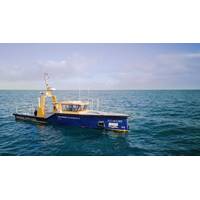
Down Under
autonomous ROV/AUV that could self-navigate and avoid in-water objects on its own,” says Director and Founder Matthew Mooney. “It had a number of sonar systems onboard, and depth sensing cameras, and its own processing system that we designed and worked in collaboration with the team at Indiana University to create. It’s still being used for research purposes to this day in the US.”The company is currently making a ROV for an oil and gas client which wants to use it in high flow waters off the coast of Taranaki. Its next custom ROV after that is a research ROV for the University
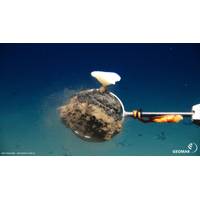
Subsea Mining Plans Pit Renewable Energy Demand Against Ocean Life
overlooks the dangers this activity could pose for the Earth’s largest pristine ecology – the deep sea. We believe it would be wise to better understand this existing, fragile ecosystem better before rushing to mine it.The authorsScott Shackelford, Professor of Business Law and Ethics, Indiana UniversityChristiana Ochoa, Professor of Law, Indiana UniversityDavid Bosco, Associate Professor of International Studies, Indiana UniversityKerry Krutilla, Professor of Environmental and Energy Policy, Indiana University(Source: The Conversation
New Hires Boost RCG US Team
legislative affairs at the American Wind Energy Association (AWEA). She has developed policy strategy for large-scale renewables, energy storage, electric vehicle infrastructure and microgrid projects. Kuhn earned her BA in Environmental Management, and her Master of Public Administration (MPA) at Indiana University. She will assist clients in navigating the US market through management consulting, strategy, and market intelligence assignments.Hutchinson is a highly experienced health, safety and environmental expert with 15 years’ experience in the wind industry. He served as HSE manager on multiple
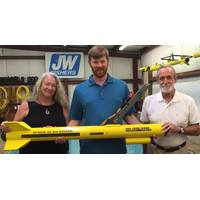
Archaeologists Dive into History
the last 30 years”. On that site the 8X located “a big pocket of Roman coins and an antique engraved mirror.” Buxton has just returned to work the project; this time armed with Fishers MC-1 mini camera so she can make a video record of the next round of incredible finds. Indiana University (IU) Bloomington has one of the oldest academic diving programs in the country. Professor Charles Beeker is the director of the school’s Office of Underwater Science and Educational Resources (USER) and has directed numerous shipwreck projects in the US and Caribbean. He is a pioneer
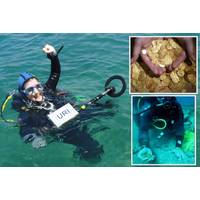
Divers Find 2,000 Priceless Gold Coins
academic careers. I hope to find a way to bring all of them back to continue their research with our Crusades field school students this year. Last year we found Crusader gold at Akko with the help of the Pulse 8X.” Another University with an active underwater archaeology program is Indiana University (IU) Bloomington. They have one of the oldest academic diving programs in the country. Professor Charles Beeker is the director of the school’s Office of Underwater Science and Educational Resources (USER) and also a member of the Marine Protected Areas Federal Advisory Committee, part
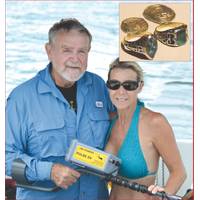
300th Anniversary of Historic Fleet Sinking
of the many other groups using this detector in their shipwreck recovery work are the Odyssey Marine, the Center for Archaeological Studies at Texas State University, the Archaeological Institute at the University of West Florida, the Office of Underwater Science and Educational Resources at the Indiana University Bloomington, the underwater archaeology program at the University of Rhode Island, the Center for Marine Archaeology and Conservation at Texas A&M University, and the Israeli Antiquities Authority, and the African Slave Wrecks Project.
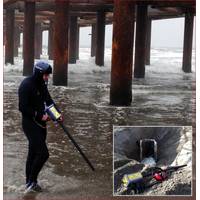
Engineers and Archaeologists Use Marine Magnetometers
. “The magnetometer works well and makes the job of tracking these pipes much faster and easier”, reports project manager Adam Vandenhouten. A few of the many other organizations using Fishers magnetometers are Algosaibi Diving and Marine Services in Saudi Arabia, Indiana University Office of Underwater Science, Gray Diving Services in Australia, Great Lakes Exploration Group, Cosmos Agencia Maritima in Peru, DUC Diving in Holland, University of West Florida Archaeology Institute, Alpha Logistics in Tanzania, Bekk Solutions in Hong Kong, and Weber Marine in Louisiana.
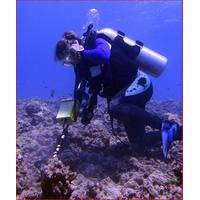
Universities and Dive Teams use Underwater Metal Detectors
the same reasons as Jamestown FD. When the need arises for detector to locate some critical evidence or a murder weapon, the team would have one that can do the job. A few of the other universities, institutions and dive teams using JW Fishers metal detectors are University of West Florida, Indiana University, University of Rhode Island, Texas A&M, Hong Kong University of Science and Technology, Woods Hole Oceanographic Institute, India’s National Institute of Oceanography, Skidaway Institute of Oceanography, Wheeling Police Dept. in W.Va., Wichita Falls Police Dept in Kan., Olmstead Sheriffs

Underwater Robotics National Challenge set for Indy
In only a few weeks, SeaPerch, a national educational outreach program using underwater robotics, sponsored by the Office of Naval Research (ONR), will hold its 2013 National SeaPerch Challenge. Hosted by the Indiana State Regions this annual competition will take place on the campus of Indiana University Purdue University Indianapolis (IUPUI) on Saturday, May 18, 2013, at the University’s Natatorium housing the Olympic pool. There the top 100 winning teams from regional competitions held across the nation will gather to assess how their SeaPerch underwater robots will fare in competition



 December 2025
December 2025





